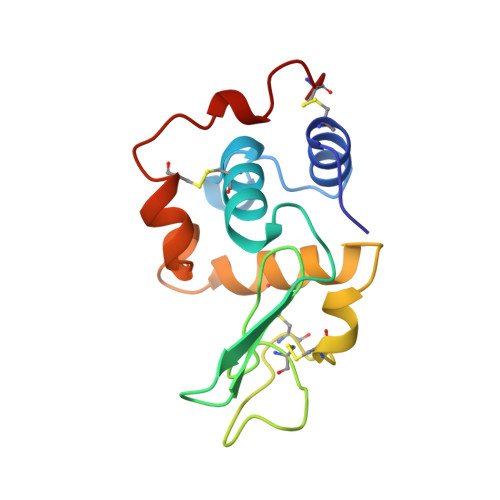Contribution of hydrogen bonds to the conformational stability of human lysozyme: calorimetry and X-ray analysis of six Ser --> Ala mutants.
Takano, K., Yamagata, Y., Kubota, M., Funahashi, J., Fujii, S., Yutani, K.(1999) Biochemistry 38: 6623-6629
- PubMed: 10350481
- DOI: https://doi.org/10.1021/bi9901228
- Primary Citation of Related Structures:
1B5U, 1B5V, 1B5W, 1B5X, 1B5Y, 1B5Z - PubMed Abstract:
To further examine the contribution of hydrogen bonds to the conformational stability of the human lysozyme, six Ser to Ala mutants were constructed. The thermodynamic parameters for denaturation of these six Ser mutant proteins were investigated by differential scanning calorimetry (DSC), and the crystal structures were determined by X-ray analysis. The denaturation Gibbs energy (DeltaG) of the Ser mutant proteins was changed from 2.0 to -5.7 kJ/mol, compared to that of the wild-type protein. With an analysis in which some factors that affected the stability due to mutation were considered, the contribution of hydrogen bonds to the stability (Delta DeltaGHB) was extracted on the basis of the structures of the mutant proteins. The results showed that hydrogen bonds between protein atoms and between a protein atom and a water bound with the protein molecule favorably contribute to the protein stability. The net contribution of one intramolecular hydrogen bond to protein stability (DeltaGHB) was 8.9 +/- 2.6 kJ/mol on average. However, the contribution to the protein stability of hydrogen bonds between a protein atom and a bound water molecule was smaller than that for a bond between protein atoms.
- Institute for Protein Research, Osaka University, Japan.
Organizational Affiliation:

















